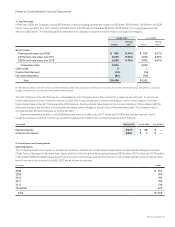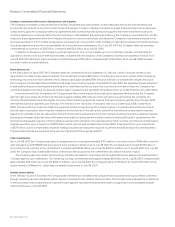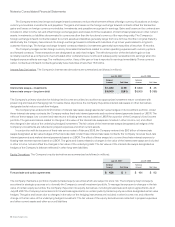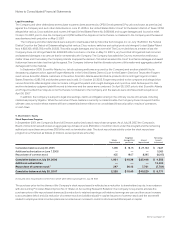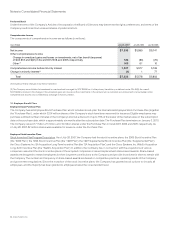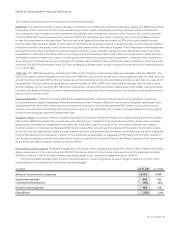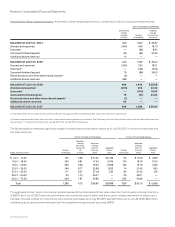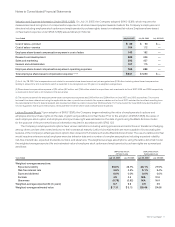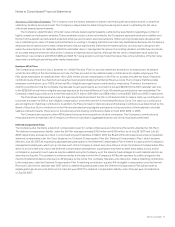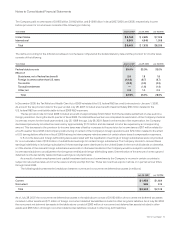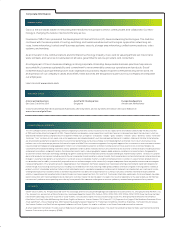Cisco 2007 Annual Report Download - page 69
Download and view the complete annual report
Please find page 69 of the 2007 Cisco annual report below. You can navigate through the pages in the report by either clicking on the pages listed below, or by using the keyword search tool below to find specific information within the annual report.
72 Cisco Systems, Inc.
Notes to Consolidated Financial Statements
The determination of the fair value of share-based payment awards on the date of grant using an option-pricing model is affected by the
Company’s stock price as well as assumptions regarding a number of highly complex and subjective variables. The weighted-average
assumptions were determined as follows:
• For employee stock options, the Company used the implied volatility for two-year traded options on the Company’s stock as the
expected volatility assumption required in the lattice-binomial model, consistent with SFAS 123(R) and SAB 107. For employee stock
purchase rights, the Company used the implied volatility for six-month traded options on the Company’s stock. The selection of the
implied volatility approach was based upon the availability of actively traded options on the Company’s stock and the Company’s
assessment that implied volatility is more representative of future stock price trends than historical volatility.
• The risk-free interest rate assumption is based upon observed interest rates appropriate for the term of the Company’s employee
stock options and employee stock purchase rights.
• The dividend yield assumption is based on the history and expectation of dividend payouts.
• The estimated kurtosis and skewness are technical measures of the distribution of stock price returns, which affect expected employee
exercise behaviors that are based on the Company’s stock price return history as well as consideration of various academic analyses.
The expected life of employee stock options represents the weighted-average period the stock options are expected to remain
outstanding and is a derived output of the lattice-binomial model. The expected life of employee stock options is impacted by all of the
underlying assumptions and calibration of the Company’s model. The lattice-binomial model assumes that employees’ exercise behavior
is a function of the option’s remaining vested life and the extent to which the option is in-the-money. The lattice-binomial model estimates
the probability of exercise as a function of these two variables based on the entire history of exercises and cancellations on all past option
grants made by the Company.
Pro Forma Information Under SFAS 123 for Fiscal Year Ended July 30, 2005 Pro forma information regarding option grants made to the
Company’s employees and directors and employee stock purchases is as follows (in millions, except per-share amounts):
Year Ended July 30, 2005
Net income—as reported $ 5,741
Share-based compensation expense (1,628)
Tax benefit 594
Share-based compensation expense, net of tax (1,034)
Net income—pro forma $ 4,707
Basic net income per share—as reported $ 0.88
Diluted net income per share—as reported $ 0.87
Basic net income per share—pro forma $ 0.73
Diluted net income per share—pro forma $ 0.71
The tax benefit in the table above includes the effect of U.S. tax regulations effective in fiscal 2005 that require intercompany reimbursement
of certain share-based compensation expenses.
The weighted-average estimated value of employee stock options was $6.19 during fiscal 2005 using the Black-Scholes model with
the following weighted-average assumptions:
Employee Stock
Option Plans
Employee Stock
Purchase Plan
Expected volatility 39.6% 33.2%
Risk-free interest rate 3.6% 2.0%
Expected dividend 0.0% 0.0%
Expected life (in years) 3.3 0.6
In fiscal 2005, the Company used an option-pricing model to indirectly estimate the expected life of the stock options. The expected life
and expected volatility of the stock options were based upon historical and other economic data trended into the future. Forfeitures of
employee stock options were accounted for on an as-incurred basis.



